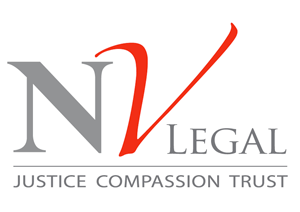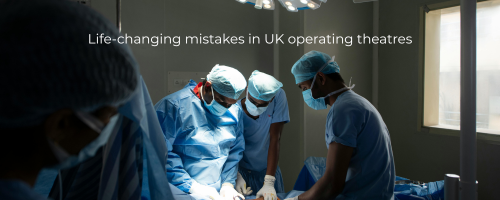Wrong-site surgery – life-changing mistakes in operating theatres
Imagine how traumatic it would be: you go into the hospital for an operation, an anxious experience in itself, perhaps something relatively minor like removing a skin lesion or correcting an injury, and wake up to discover that the wrong limb has been operated on, or worse, removed.
This kind of error, known as wrong-site surgery, can be life-changing, leaving physical, emotional, and financial scars that may never fully heal.
What is wrong‑site surgery?
Wrong-site surgery is classified as a “never event”, an incident that should never occur. It includes operations performed on the wrong part of the body, the wrong limb, or even the wrong patient entirely.
Procedures range from amputations of the incorrect arm or leg to the removal of the wrong breast, eye, or organ.
Even though it is relatively rare, cases are preventable. According to statistics released from the NHS, from April 2024 to March 2025, there were 421 patient safety incidents designated as “never events”. These included instances of incisions to the wrong organ, procedures intended for another patient, retained foreign objects, misplaced gastric tubes, and the wrong blood used in a transfusion. See more information on the 421 cases HERE
How can it happen?
Several factors contribute to these errors:
- Human error and miscommunication: mistakes in naming, patient identity, or surgical site.
- Checklist failures: even when WHO-style checklists are in use, failures can happen at the morning briefing or before surgery.
- Administrative mix-ups: lists may include wrong or outdated referrals. In one instance, repeated wrong-site lesion removals occurred at the Royal Stoke Hospital three times within months due to such failures.
Despite these checks, there have been errors in reporting. One NHS board found no surgical wrong-site events over two years but still recorded 86 wrong-site list errors in nearly 30,000 cases (0.29%).
Can precautions prevent it?
Yes, to a large extent. Precautions include:
- WHO-style surgical safety checklists.
- Clear marking of the surgical site (“right leg” arrow, for example).
- Surgical briefs with the whole theatre team BEFORE anaesthesia.
- Confirming patient identity, procedure, and site verbally.
- Empowering staff to speak up if protocols are not followed.
Even so, many errors are from systemic or cultural failures, power imbalances, lack of patient safety culture, or poor record‑keeping. At Great Ormond Street Hospital, over 700 children treated by a single surgeon were later reviewed. Individual safeguards are not enough if not backed by institutional accountability.
What can you do if wrong‑site surgery happens to you?
If you’ve been a victim of wrong-site surgery:
Seek legal advice early. You do not need to wait for the hospital to investigate. If you have suffered a never event, you have a clinical negligence claim and are entitled to compensation.
Settlements can include compensation for:
- Physical pain and suffering
- Loss of earnings and future earnings
- Rehabilitation, treatment, care and prosthetics
- Emotional and psychological trauma and therapy
- Adaptive home modifications
Support and investigation
- The hospital trust must conduct an internal investigation.
- You can request your full medical records.
- You may receive an apology, waived costs, and corrective treatment from the NHS trust. The Trust is obligated to respond openly to never events.
Psychological and practical help
- Many survivors benefit from counselling due to trauma and anxiety.
- Rehabilitation specialists, occupational therapy, and support groups can aid recovery.
- NV Legal can help navigate claims for benefits, arrange occupational health, vocational assessments, and arrange support for ongoing care needs.
Wrong-site surgery is devastating, and sadly still exists in the NHS. While procedural safeguards like checklists and surgical briefs help reduce risk, systemic failures still allow too many incidents to slip through.
If this has happened to you or a loved one in the UK, we can help. We understand how life-altering these injuries are, and we have extensive experience in helping clients seek justice, compensation, and the support necessary to rebuild.
If you’ve experienced a similar situation, please don’t suffer in silence. Contact us for a free legal consultation to explore your rights and next steps.
NV LEGAL
We pride ourselves on our personal, hands-on approach. When you work with us, you won’t be passed between departments or left chasing updates. You’ll deal directly with one of our experienced solicitors, who will manage your claim and recovery pathway from start to finish.
If you need support, get in touch for a free, no-obligation chat. It’s not just about the claim; it’s about helping you recover. We operate on a no-win, no-fee basis; you will not be charged if your claim is unsuccessful, and your case will only be handled by a qualified solicitor from day one.
Call – 03330 112 732
Email – info@nvlegal.co.uk
Website – nvlegal.co.uk
Find us on social media – Facebook, LinkedIn


